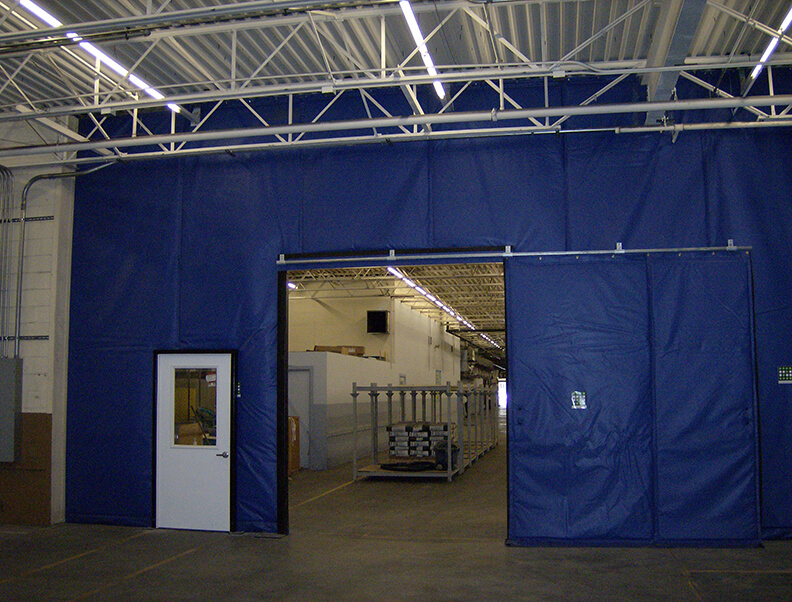- Home
- News
- How Curtain Walls Work for Dust Control Applications
How Curtain Walls Work for Dust Control Applications
Dust control, you know it's a problem. After all, dust or particulate suspended in the air can be a nuisance, a quality issue, or most significantly a safety issue.
As a nuisance, particulate generated from cutting, grinding, mixing, etc., can settle on surfaces significant distances from the operation if containment equipment is not in place. Dust on neighboring equipment, furniture, office equipment, windows, or floors can become a constant drain on cleaning and maintenance resources.
As a contaminate affecting product quality, uncontrolled particulate matter can spoil or degrade batches of differing critical materials, whether in chemical processing or food processing.
From a safety standpoint, there are many circumstances where a high enough concentration of airborne dust sized particulate in a closed space can become explosive or flammable. Often this can occur with seemingly innocuous products those we wouldn't normally associate with an explosion hazard. Additionally, airborne dust can be a health hazard to employees. These hazards can range from a skin, eye or bronchial irritation to more serious issues for folks with asthma. Most serious can be the potential to cause lung disease like cancer.
Methods of dust control
There are several methods used to keep particulate in one space from contaminating another area. These include:
- Local exhaust a high velocity airflow stream captures particles at the point they are generated and carries them away.
- Exhaust with filtration a high velocity airflow stream captures particles and recirculates them through a filter medium, where they are removed.
- Area exhaust a high volume exhaust fan draws air from the full room volume to an outside vent or recirculates through a filtration/separation device.
- Barrier separation simply a wall or partition, such as a curtain wall, between affected areas.

How curtain walls help with dust control
Most obviously, fabric curtain walls act as a very effective physical barrier on their own, blocking the transfer of dust particles from space to space. In some cases, an application will require a temperature differential as well between the dust controlled space and the area surrounding it. Curtain walls are available with several levels of insulation.
The other benefit of using industrial curtain walls for a dust control application is that they can significantly improve the effectiveness of an exhaust system as well as offer the opportunity for cost savings, both in the initial cost of the equipment, as well as in direct operating cost. Anytime a space is to be exhausted, the smaller the space can be made, the smaller the exhaust equipment can be specified. Partitioning around a dust source with a fabric curtain wall takes full advantage of this relationship. By reducing the volume of the space to be exhausted, smaller fan(s) can be used since less total air movement is required. Lower air velocity through the filter media increases the effectiveness of particle separation of the device. Additionally, lower air flow through the filter reduces the amount of cleaning or filter replacement required.
Back to News